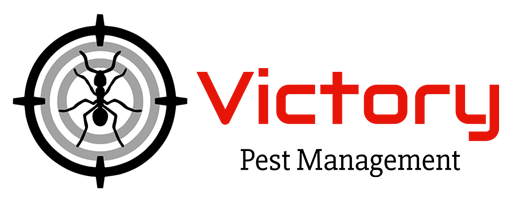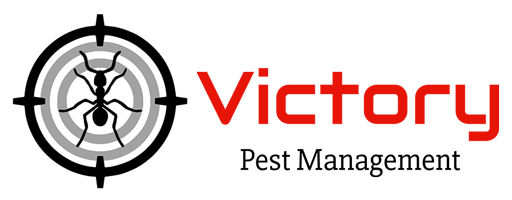How Pests Can Damage Your Home’s Plumbing
Plumbing Problems Caused By Pests
Our homes are meant to be sanctuaries, where safety, comfort, and convenience converge to create an ideal living environment. Central to this comfort is a functioning plumbing system, which quietly manages water flow, sanitation, and drainage. However, lurking behind the walls and beneath the floors are unseen threats that can compromise this critical system—pests. While most people associate pests with chewed food, damaged furniture, or contaminated spaces, their ability to wreak havoc on plumbing systems often goes unnoticed until significant damage has occurred. Understanding the hidden ways pests impact plumbing is a vital step in safeguarding your home from costly repairs and disruptions.
Rodents, for example, are notorious for their constant gnawing, which isn’t limited to furniture or wires. They often target pipes—both plastic and metal—causing leaks and blockages that can escalate into extensive water damage if left unchecked. Meanwhile, insects such as cockroaches and ants can infiltrate drains and pipes, creating clogs and breeding grounds that compromise water flow and sanitation. Even seemingly harmless pests like birds or small mammals can obstruct vents and outdoor plumbing, leading to pressure imbalances or backups. Recognizing how pests exploit your plumbing and taking proactive measures to address their presence is essential to maintaining your home’s integrity and comfort.
The Hidden Menace Of Rodents And Chewed Pipes
Rodents, particularly rats and mice, are some of the most destructive pests when it comes to plumbing systems. Their constantly growing incisors drive an incessant need to chew, and unfortunately, pipes—especially those made of plastic or PVC—become prime targets. Rodents gnaw through these materials not just to keep their teeth in check but to access water sources hidden within. While a chewed pipe may start with a slow, undetectable leak, over time, that minor issue can escalate into widespread water damage, leading to costly repairs and property devaluation.
The hazards of chewed pipes extend far beyond structural concerns. Leaking pipes create the damp, humid conditions ideal for mold growth, which can severely compromise indoor air quality and lead to health issues such as respiratory problems and allergies. Furthermore, rodents leave behind droppings and urine near the water sources they exploit, increasing the risk of bacterial contamination and the spread of diseases such as leptospirosis. The problem compounds as rodents are highly mobile, moving freely through walls, crawl spaces, and attics, leaving a trail of destruction that impacts multiple areas of your plumbing system. Addressing rodent activity swiftly is essential to safeguarding your home’s plumbing, health, and overall integrity.
Insects And The Perils Of Nesting In Drains
Insects, although smaller than rodents, are equally capable of wreaking havoc on your plumbing. Cockroaches, ants, and drain flies are particularly notorious for finding refuge in damp, dark environments like drains and pipes. Drain flies, as their name suggests, breed and thrive in the organic matter that accumulates in slow-moving or clogged drains. Their presence not only creates an unsanitary environment but also exacerbates blockages, leading to reduced water flow and potential backups.
Ants, especially carpenter ants, pose another significant threat. They often use plumbing as a means to traverse your home, building colonies near or within moist areas. Some species are even drawn to leaking pipes, where they find a ready supply of water. Over time, their tunneling activities can weaken structural supports around plumbing fixtures, creating long-term vulnerabilities.
Termites And Moisture Problems
Termites are usually associated with wood damage, but their love for moisture makes plumbing systems an indirect target. Termites are attracted to areas where water leaks from pipes or fixtures, as damp wood is much easier for them to chew through. A slow, unnoticed leak in your plumbing can create the perfect conditions for a termite infestation to begin, compromising not only your plumbing but also the structural integrity of your home.
Additionally, once termites establish themselves near a moisture source, they can tunnel into other areas of the home. Their damage often goes unnoticed until it’s too late, as the infestation remains hidden behind walls or beneath floors. The combination of water leaks and termite activity can lead to catastrophic damage, requiring both plumbing repairs and extensive pest control measures.
Blocked Vents And Sewer Backups
Pests can also affect your plumbing indirectly by obstructing vent pipes. Birds, squirrels, and even bees are known to build nests in plumbing vents, which are crucial for maintaining proper air pressure in your drainage system. When these vents are blocked, sewer gases can’t escape, and the pressure imbalance can lead to slow drainage or even sewage backups.
Blocked vents not only disrupt your plumbing but can also create unpleasant odors throughout your home. Furthermore, the presence of nesting materials increases the risk of introducing bacteria or allergens into the air, compounding the health hazards. Identifying and removing these obstructions quickly is essential for restoring your plumbing to proper working order.
Water Damage And The Attraction Of Secondary Pests
One of the most significant consequences of pest-related plumbing damage is water leakage, which often leads to broader pest infestations. Damp environments created by leaking pipes attract pests like silverfish, cockroaches, and centipedes, which thrive in moist conditions. As these pests gather, they can further damage your home by chewing through insulation, contaminating surfaces, or even introducing more severe infestations.
Water damage from leaks also weakens the materials around your plumbing, creating additional entry points for pests. Once inside, pests can establish colonies or nests that exacerbate the problem, leading to a cycle of damage that grows increasingly expensive to address. Ensuring your plumbing is pest-proof and regularly inspected is crucial for breaking this cycle and protecting your home.
At Victory Pest Management, we recognize that pests pose a much greater threat than meets the eye. Beyond chewing wires or contaminating food, pests can wreak havoc on essential home systems, including plumbing. These systems, so vital to daily life, are often hidden from view, making them prime targets for damage that goes unnoticed until it’s too late. Rodents gnawing through pipes, insects nesting in drains, and larger pests obstructing vents are just a few examples of how infestations can compromise your home’s functionality and safety. That’s why our team focuses on proactive pest control, addressing not only the visible nuisances but also the hidden risks that pests bring to your plumbing and other critical systems.
Waiting to address a pest issue can lead to costly repairs and unnecessary stress. A small leak caused by rodent activity or a clogged vent due to nesting pests can escalate quickly, resulting in significant damage, health hazards, and increased expenses. At Victory Pest Management, we believe in acting decisively and effectively to prevent these problems before they take root. Contact us today for a thorough inspection and tailored pest control plan. Together, we’ll protect your plumbing and your entire home, ensuring peace of mind and long-term safety for you and your family.



